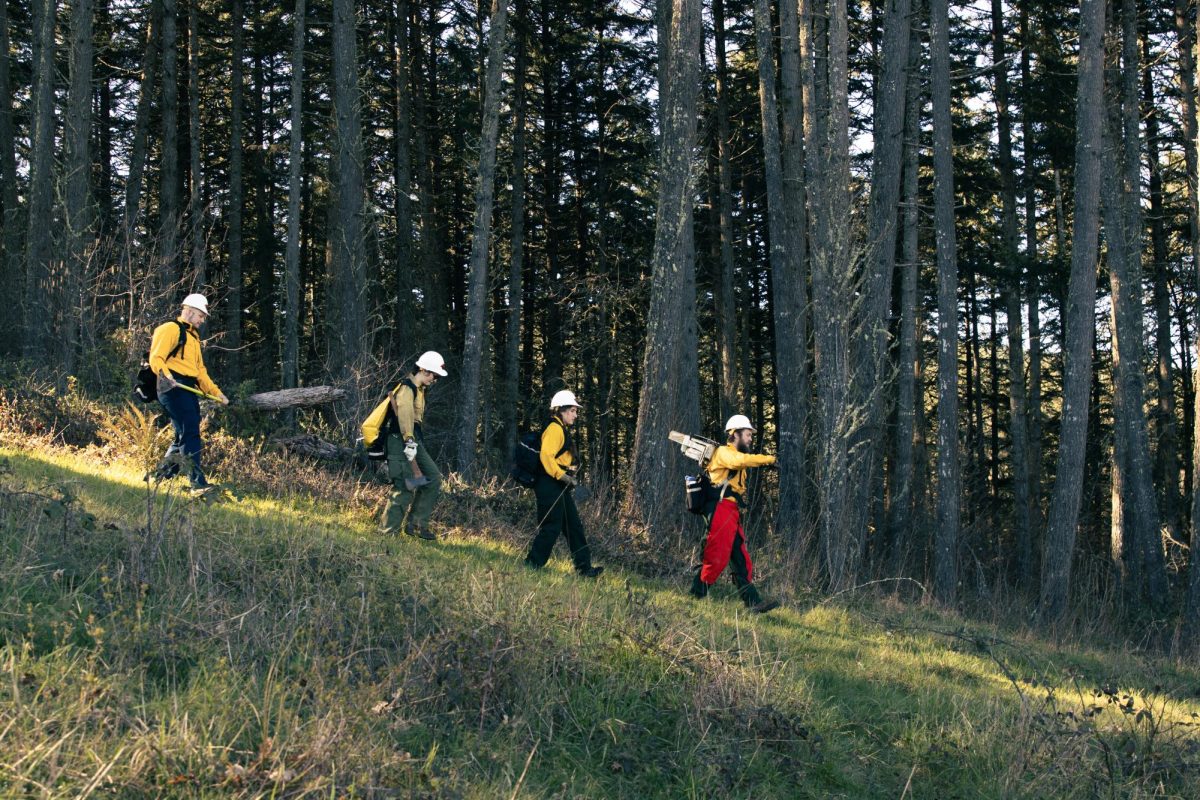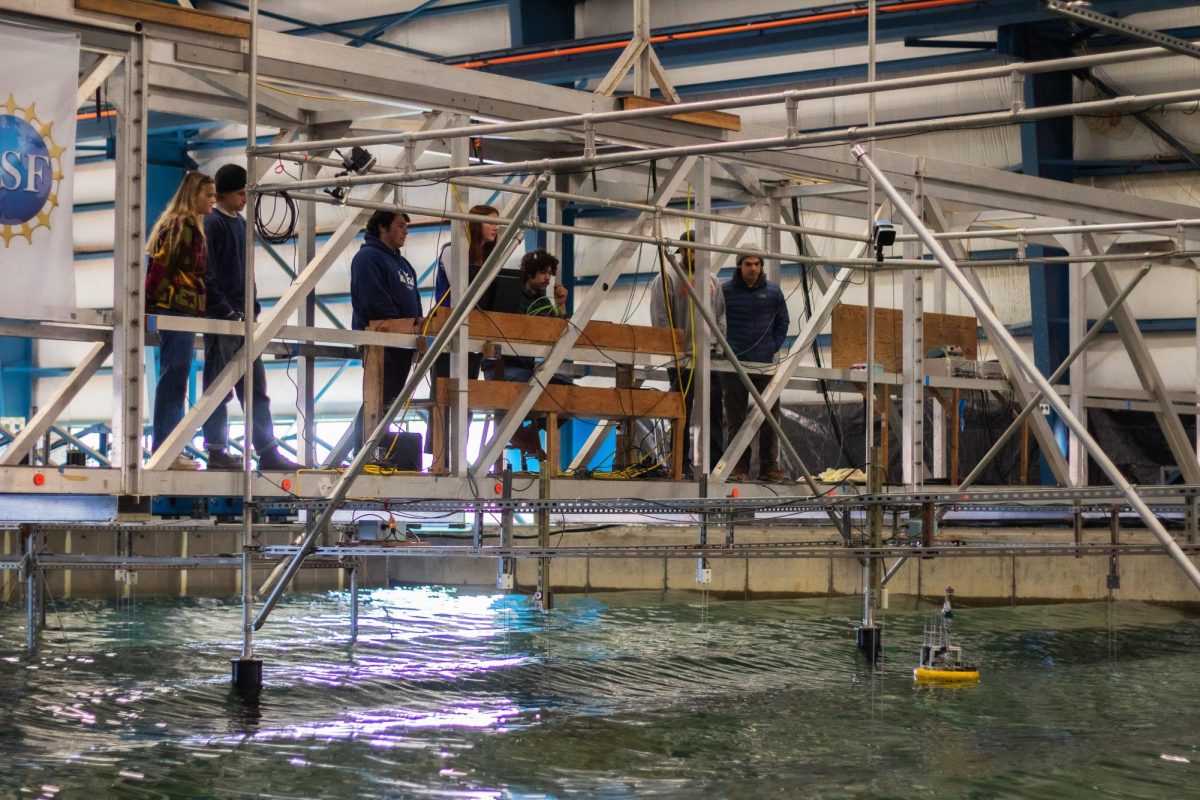Relaxed and composed, Richard Nixon, the newly-appointed President, was interrupted by applause 26 times from the chamber floor, so recalled Robert B. Semple Jr., reporting for the New York Times on Jan. 23, 1970 — the day after Nixon’s first State of the Union address.
“The great question of the seventies,” Nixon addressed the chamber, “Is: shall we surrender to our surroundings or shall we make peace with nature and begin to make reparations for the damages we have done to our air, to our land and to our water?”
That year, watching Nixon from the chamber floor was Senator Gaylord Nelson. In a few weeks, he will promote the very first Earth Day to students across America, while others across the country hold onto the belief that pollution was the price of progress.
Despite the contention of the country, the largest piece of environmental legislation in history, the Clean Air Act, passed in 1970 by a vote of 374 to 1 in the House, and 73 to nil in the Senate – nearly unanimous.
The CAA dominates the skyline of environmental legislation like the Great Pyramid of Giza over Cairo, immovable, essential — old. After 54 years, Oregon, and other states with bold climate plans, are beginning to feel its limits.
At its inception, the CAA was, in a nutshell, intended to give the newly formed Environmental Protection Agency the authority to establish national standards for pollutants in the atmosphere.
Pollutants like lead, ozone, carbon monoxide made up the ‘criteria pollutants’ — pollutants that can harm health, the environment and cause property damage, according to the EPA. The CAA also tackled ‘hazardous pollutants’ — a 188-point list of pollutants that are known or suspected to cause cancer, reproductive effects, adverse environmental effects and pose other serious concerns.
In 1970, the EPA was given reign to bring these pollutants down to the standards they set by drafting plans for industrial processes in each state and requiring car companies to manufacture engines that complied with emission standards; new passenger vehicles are 98-99% cleaner for most tailpipe pollutants compared to those of the 1960s.
“If you actually look at the ‘70 act, that act was so far reaching,” said Dave Bray, associate director of EPA’s Region 10 Air and Radiation division. “It gave EPA so much authority to identify and address air quality issues, but we didn’t utilize the authorities in the act.”
Americans in the seventies, eighties, and nineties were most worried about lead poisoning, ozone depletion and other nasty consequences the criteria and hazardous pollutants could cause.
“We hadn’t cleaned up the national standards, people were still breathing unhealthful air,” Bray said.
Greenhouse gasses were not en vogue. Scientific, political and societal elements were still gathering behind the idea of climate change into the 2000s.
In 2006, Oregon and several other states, petitioned the EPA to regulate emissions of carbon dioxide and other gasses that contribute to global warming from new motor vehicles.
After a battle in the Supreme Court, the rule came in favor of the states, officially deciding greenhouse gasses were air pollutants that were hazardous to human health and the EPA needed to begin regulating them.
After their research period came to a conclusion, the EPA sent out a series of standards meant to control the greenhouse gas emissions of two sources; what they call mobile (vehicles, planes, trains, etc.) and stationary sources (factories, power plants, refineries, etc.)
In their efforts to do so, the EPA ran into the boundaries of the CAA. In an amendment for the 1977 CAA, a stationary source was defined as a “major source”’ if it emitted over 250 tons of air pollutants in a year.
“They weren’t thinking about greenhouse gasses, they were thinking about the nasty pollutants that people breathe when they live next to a facility,” Bray said.
For a typical world-scale refinery, yearly carbon dioxide emissions range from 0.8 to 4.2 million tons of CO2 per year — that is a far cry from 250 tons. Therefore, without tailoring the amendment, all stationary sources became ‘major sources’ of carbon emissions and triggered many additional, expensive permitting procedures.
Without the permission of Congress, the EPA sought to tailor this 1977 amendment.
“So industry, led by the Utility Air Regulatory Group basically said, ‘well, this is just a perfect example of why you can’t regulate stationary sources of greenhouse gasses,’” Bray said.
In the case of Utility Air Regulatory Group v. EPA, the Supreme Court favored industry unanimously. The current structure for regulating the original criteria pollutants — like lead and carbon monoxide — don’t really fit when it comes to greenhouse gasses.
According to Bray, this case highlighted an absence in the EPA’s toolbox.
The guidelines that the CAA uses to regulate things — like lead or ozone — weren’t applicable to carbon dioxide. The amount of carbon dioxide makes this difficult, but also the lack of “control technologies” — or technology that could eliminate it. This is available for other greenhouse gasses, like methane, but not carbon dioxide.
“Given Congress’s failure to add additional authority and directions related to emissions production, [EPA] are a little bit hamstrung in needing to operate within their authority,” said Nora Apter, Senior Climate Program Director with Oregon Environmental Council. “So state-level climate action is really, really important.”
The Oregon Climate Action Plan is one of the state’s biggest steps. It was signed into law in 2004 and according to Apter, was historic for its direction towards all boards and committees to prioritize climate goals, focusing on parts of the government that would not normally be involved.
The Climate Protection Program is part of Oregon’s Environmental Council umbrella, alongside the Climate Action Plan. A significant component of the program is its cap on emissions from top polluters. Specifically, they are required to reduce their emissions by 50% by 2035 and 90% by 2050.
These targets are stronger than those that were originally proposed in the Climate Action Plan of 2004. “That’s because there was such strong support for making sure that the emissions reduction targets under the kind of protection program were in line with the best available science,” Apter said.
However, the natural gas industry sued to overturn the program, and it is currently invalidated. Although work is being done to restore the program, Apter says they expect to continue to see the natural gas sector fighting to undermine it.
The Climate Action Plan and Climate Protection Program are examples of tools states can wield in order to accomplish what the CAA cannot — but they stop at state lines.
Should industry become disenchanted with Oregon’s mandatory caps and regulations, they can move operations to a nearby state with less strict regulation.
In this case, the net carbon dioxide emission is the same. However, it puts a unique pressure on congress. The same unique pressure that inspired the CAA all the way back in 1970.
According to Bray, one of the pressures that drove the CAA was states and industry not wanting other states doing things less stringent than them because it affects the economic traction for industry. If it is expensive to accommodate climate regulations in one state, the company will likely just choose to build in a different state, taking away jobs and resources from the state with more climate regulation.
“At some point that difference between what paths the states have taken becomes a significant pressure on Congress to create nationally uniform requirements that eliminate the race to the bottom,” Bray said.
The national atmosphere (both literally and figuratively) that provoked the CAA of 1970 to be signed so unanimously had been brooding for decades. The science behind lead poisoning was clear, and there were safe alternatives that were cheaper and easy to substitute — the same is true for the other five criteria pollutants.
“At the end of the day, there is a limit to what we can achieve under the Clean Air Act alone, so eventually we’ll need some other big piece of legislation,” Bray said.















